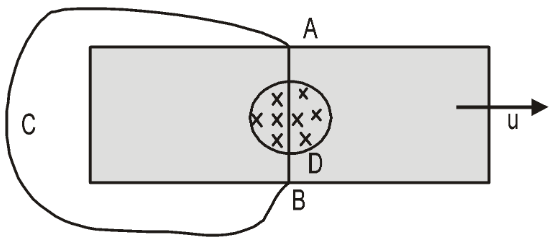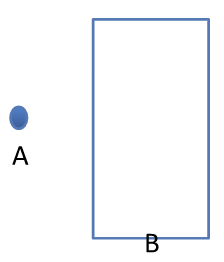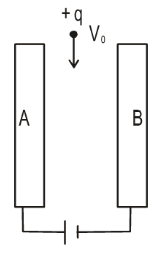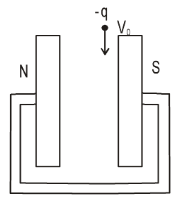Thought Provoking Problems on Electromagnetism
These problems are from pre-test conducted in teacher's workshops by Prof HC Verma and his team.
Test 1
Source: RESPECT KV MRP Workshop 17th-24th May 2017
- A point charge $q$ named A is placed at the center of a hollow spherical ball of copper. Another point charge $q$ named B is placed at some distance from the ball.
- Show the charge distribution on both the surfaces of the ball.
- In which direction will the force on A be?
- In which direction will the force on B be?
- Are the forces on A and on B equal in magnitude?
- A 2-metre long conducting wire having many twists and turns is connected to a battery. Is there an electric field inside the wire? If yes, what is its direction? Which charge distribution creates this electric field?
- Two students A and B are independently working on finding the emf of a cell with a potentiometer. Both of them report that the galvanometer is showing same sided deflection at both ends of the potentiometer wire. But for student A the galvanometer deflection goes on increasing as he moves the jockey (moveable contact) along the wire from the positive end, while for student B it goes on decreasing as he moves the jockey in the same way. Comment on the type of mistake you think the students are making.
- The figure shows electric field at a distance $z$ from an infinite plane charge layer with surface charge density $\sigma_1$. It also shows the electric field at a distance $z$ from a point charge $q_0$ placed at the origin. Now think of a circular disk of some radius carrying a charge $q_0$ uniformly distributed on the surface of the disk such that the surface charge density is $\sigma_2$. Suppose it is placed in the $x-y$ plane with its center at the origin. Show the plot of the electric field as a function of $z$ on the same diagram given in this question.
- A typical question in textbooks reads like "Find the force between a charge of 1 mC and another charge of 2 mC placed 10 cm apart". Assume that these charges are placed in a spherical volume. Find the least radii of the spherical volumes that can contain 1 mC and 2 mC charges without causing dielectric breakdown in air. The dielectric strength of air at standard pressure is 300 kV/mm.
- The values of the electric field at different x positions on the x-axis are given in the table. This field may be due to
x (cm) E (V/m) 10 10000 15 2963 20 1250 25 640 30 370 35 233 - a point charge placed at the origin
- an electric dipole placed at the origin
- a large plane with uniform surface charge density placed in y-z plane
- a line charge of uniform linear charge density placed along z axis.
- In a circuit containing inductance 0.1 H and Resistance 0.1 $\Omega$ can you say that (a) Resistance is negligible (b) Inductance is negligible (c) Resistance and inductor are equally important.
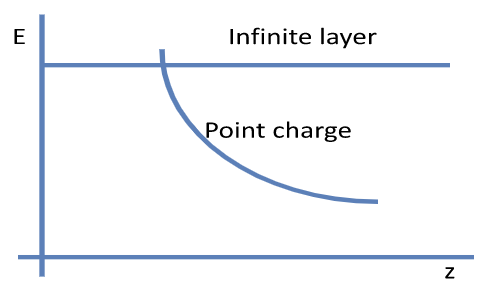
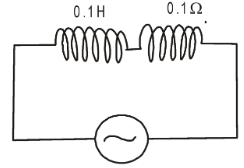
Test 2
Source: RESPECT KV MRP Workshop 15th-24th May 2017
- A magnetic field in upward direction (coming out of the plane of the diagram) is confined in a cylindrical region, as suggested in the figure, and is increasing. The flux of the magnetic field through the region is increasing at a constant rate X. A square frame of copper having edge length L is placed symmetrically around the magnetic field region. The area of cross section of the wire is A and its resistivity is $\rho$. The points A, B, C, D are points on the four arms of the frame, diving the arm in ratio 1:3.
- What is the current in the wire? Is it clockwise or anti-clockwise in the figure?
- What are the magnitudes of the electric field at points A, B, C, D?
- What are the directions of the electric field at points A, B, C, D?
- Two identical long wires placed side by side carry equal currents I in opposite directions. Assume that the current is due to electrons moving with drift velocity v.
- What will be the magnetic field at a distance R from the wires?
- A person is moving in a toy car moving parallel to the wires with the speed v (same as the drift velocity). What will be the magnetic field at a distance R from the wires in her frame?
- Can the value of magnetic field change by changing the frame?
- Consider a bar magnet NS of length L and magnetic moment M. Consider a spherical surface of radius L/2 with its center at the north pole. Find the flux of the magnetic field $\oint \vec{B}\cdot\mathrm{d}\vec{a}$ through the spherical surface.
- A long straight wire carries a current I. Consider a rectangle of length L and width b as shown in the figure. The closer arm is at a distance x from the wire. Find the line integral $\oint \vec{B}\cdot\mathrm{d}\vec{l}$ on the rectangle.
- Two small metallic spheres having charge $+Q$ and $-Q$ are separated by a distance. Consider a circle of radius $R$ perpendicular to the line joining the sphere and with the center at this line (clockwise as seen from $+Q$ side). The spheres are joined by a wire so that charge flows from positive sphere to the negative sphere. At a certain instant, the current in the wire is I. Will the value of the line integral $\oint\vec{B}\cdot\mathrm{d}\vec{l}$ on the circle, less than, equal to or greater than $\mu_0 I$?
- A uniformly magnetized bar magnet is moved with a small but constant velocity along the axis of a copper ring. What will be the direction of the current when (a) a little less than half the magnet has crossed the plane of the coil. (b) half the magnet has crossed the plane of the coil (c) a little more than half the magnet has crossed the plane of the coil.
- The magnetic field due to an iron atom at a distance is B1 and that due to a copper atom at the same distance is B2. Then B1/B2 is of the order of
- 1-5
- 10-100
- 100-500
- 1000-5000
- The electric field in an electromagnetic wave travelling in free space is given by \begin{align} \vec{E}=E_0\left(\hat\imath+\sqrt{3}\,\hat{k}\right)\cos\left(k_0(\sqrt{3}x-z-\omega t)\right). \end{align} It falls on the surface of a medium of refractive index $\sqrt{3}$. The surface itself is in the $x-y$ plane.
- Which direction is the EM wave moving? Give a unit vector in this direction.
- Which plane is the plane of incidence?
- Is the electric field in the plane of incidence, perpendicular to the plane of incidence or in some other direction?
- Is the wave unpolarized, linearly polarized, elliptically polarized?
- If the wave corresponds to light of 600 nm, what is the value of $k_0$?
- What is the intensity of the reflected wave?
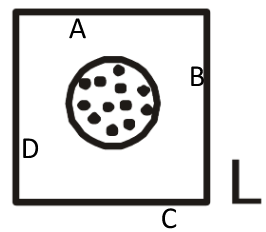
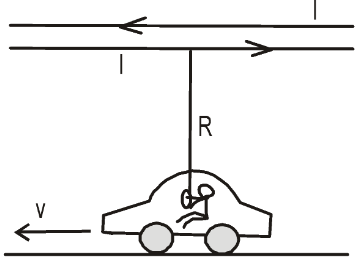
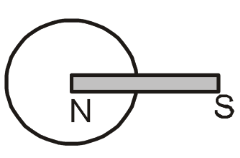
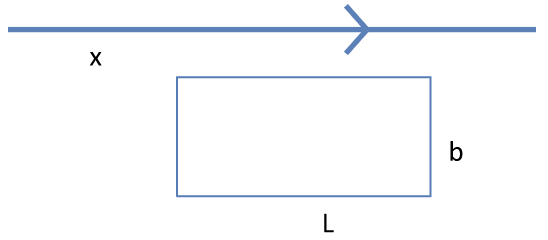

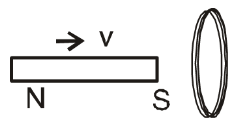
Test 3
Source: RESPECT KV Workshop 10-12 April 2017, IIT Kanpur
- Three identical metal plates with large surface areas are kept parallel to each other as shown in the figure. The leftmost plate is given a charge $Q$, the rightmost a charge $-2Q$ and the middle one remains neutral. Find the charge appearing on each of the surfaces.
- Consider the situation shown in the figure. The wire PQ has mass $m$, resistance $r$ and can slide on the smooth, horizontal parallel rails separated by a distance $l$. The resistance of the rails is negligible. A uniform magnetic field $B$ exists in the rectangular region and a resistance $R$ connects the rails outside the field region. At $t=0$, the wire PQ is pushed towards right with a speed $v_0$. Find (a) the current in the loop at an instant when the speed of the wire PQ is $v$ (b) the acceleration of the wire at this instant, (c) the velocity $v$ as a function of $x$ and (d) the maximum distance the wire will move.
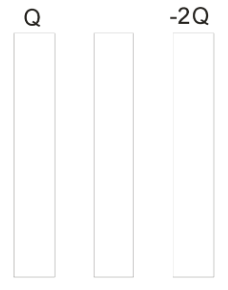
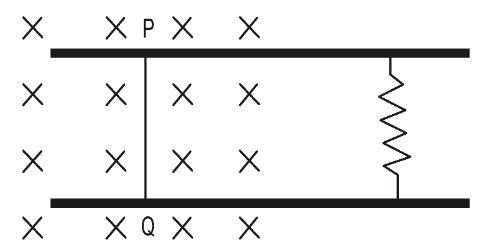
Test 4
Source: RESPECT KV Workshop 14-16 April 2017, Delhi
- A magnet is moved near a thin metallic rod AB. (a) Is there an electric field around the rod? (b) Do charges appear at the ends of the rod? If yes, at which end it is positive and at which end it is negative? (c) Is there a current in the rod? If yes, in which direction?
- There is a uniform magnetic field $B$ in a cylindrical region as shown. The field points into the page. A metal plate is moved parallel to itself with a uniform velocity $v$ as shown. A and B are brush contacts so that the plate slides past them. A metallic wire ACBA is connected between A and B.
- Will there be an induced current in ACB? If so, in which direction?
- Is there a change in magnetic flux in the loop ABCA as the plate moves?
- A solenoid having a self inductance is connected to a variable resistance $R$ and a battery of emf $E$. The resistance $R$ is continuously increased for some time. Will the current in this period be less than, equal to or greater than $E/R$?
- A charged particle having a charge q is brought near a plastic rod B which is initially uncharged. Show in a diagram how the charge will appear in the rod B.
- Two metallic plates A and B are connected to a battery as shown in the figure. A positively charged particle is sent into the region between the plates with a velocity $v_0$ as shown in the figure. As it comes out of the region on the other side,
- which direction does it deflect, towards A or towards B?
- whether its speed will be larger than, smaller than, or equal to $v_0$?
- The figure shows a negatively charged particle moving with velocity entering the region between the poles of a magnet. As it comes out of this region on the other side of the magnet,
- which direction will it deflect, towards the north pole or towards the south pole?
- whether its speed will be larger than, smaller than, or equal to $v_0$?
- A variable power supply is connected to a coil and an ammeter, and the time dependence of the ammeter reading is shown. A nearby coil is connected to a voltmeter. Draw a graph showing the time dependence of the voltmeter reading?

